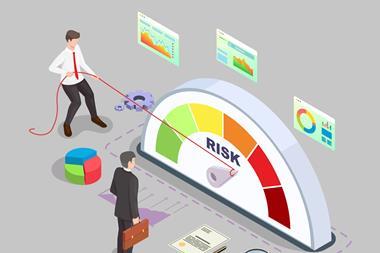Equally, AI risks are often ’implicitly’ covered within E&O policies – however, more ’exclusionary’ terms could be on the cards if the technology goes wrong, says innovation manager
Carbon insurance, which protects the purchase of carbon credits, is ”very much in the startup phase” according to Aditya Sanghvi, innovation manager at CFC Underwriting.

Sanghvi was speaking during a webinar hosted by underwriting software firm Send on 14 August 2024, entitled Emerging risks: What is coming next for the industry? The online panel discussion was chaired by Tony Tarquini, chief executive at consultancy 5189 Limited.
According to Investopedia, carbon credits – also known as carbon offsets – “are permits that allow the owner to emit a certain amount of carbon dioxide or other greenhouse gases”.
It explained: “Companies that pollute are awarded credits that allow them to continue to pollute up to a certain limit, which is reduced periodically. The company may sell any unneeded credits to another company that needs them.”
Organisations can purchase additional credits if its emissions exceed its current credit cap. Each credit equates to one ton of carbon dioxide or greenhouse gas.
Lauren O’Rourke, exposure manager for new syndicates at insurer Apollo, told online attendees that climate change continues to be an emerging risk for the insurance industry thanks to the growth of the renewable energy sector and the ongoing transition to greener energy sources, such as solar or wind power.
Sanghvi agreed, noting that associated carbon insurance is ”very much in the startup phase.”
He explained that this phase is “all about creating a category” because although the risks around greener energy are “pretty well known”, the availability of cover is still sporadic.
CFC Underwriting tackled this dilemma by launching carbon delivery insurance in March 2024, which protects against the non-delivery of carbon credits – an issue which CFC discovered had affected 65% of companies that use carbon credits, reported Sanghvi.
Potential exclusions
Another “emerging risk”, according to Sanghvi, is artificial intelligence (AI).
Read: Aon launches carbon capture and storage insurance product
Read: Insurers told to ‘really know how to use’ AI amid hallucination and transparency risks
Explore more ESG stories here or discover more news here
He said during the webinar: “[The] full potential [of AI] is yet to be known. In errors and omissions [insurance], for example, we implicitly end up covering a lot of AI risks within that, so it’s something worth monitoring.
”If things start to go wrong with AI, we will see more behaviour in the market that is exclusionary.”
For Sanghvi, AI also fuels the potential for new products. As an example, he explained that CFC has been working on an AI risk calculator, to help underwriters understand the risks that clients are exposed to.
“With just a few data points, the [underwriter can] appreciate the client’s location, application [and] the extent to which they are using AI,” Sanghvi continued.
Data is key
Data is key for the management of any emerging risk, to support the provision of adequate and accurate cover. However, sourcing high quality data around a potential new risk can be challenging.
O’Rourke said: “Capturing the granularity of those perils is key to understanding risks and identifying what opportunity [there] is around building new products. Collecting the data and developing scenarios around data points [are] key to helping understand and manage risk.”
She additionally noted that data can positively support work to close coverage gaps, rather than just be used to understand where exclusions might be appropriate.
Hosted by comedian and actor Tom Allen, 34 Gold, 23 Silver and 22 Bronze awards were handed out across an amazing 34 categories recognising brilliance and innovation right across the breadth of UK general insurance.




















































No comments yet